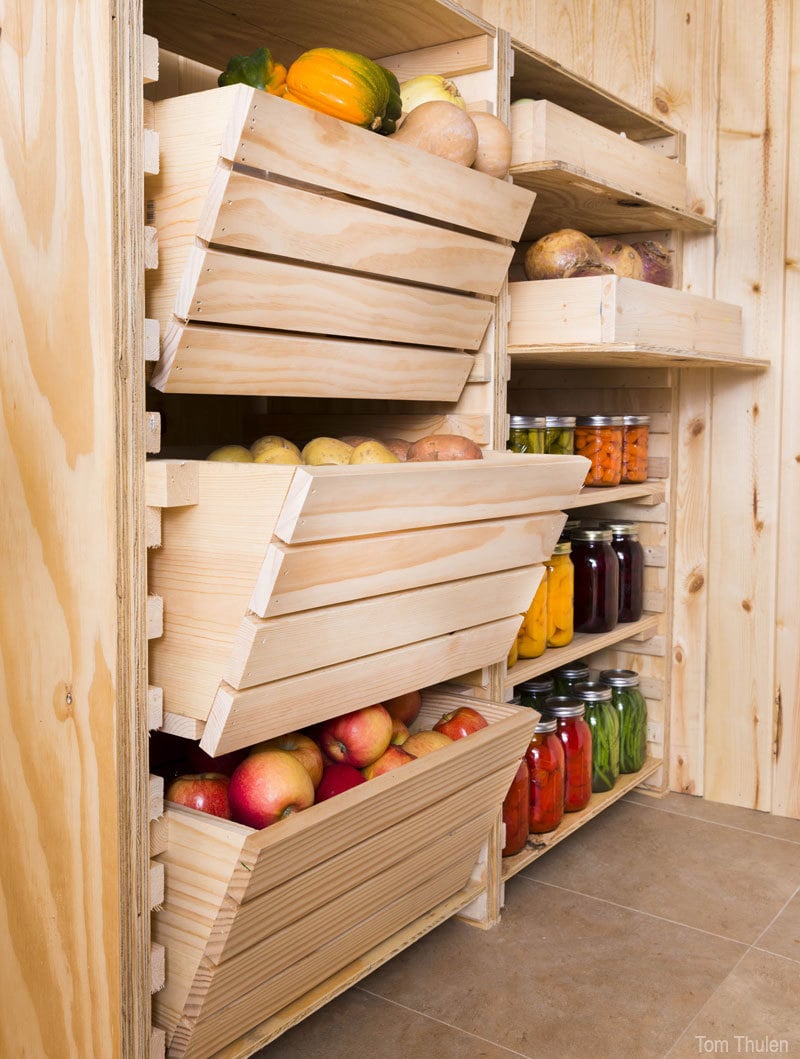Hope your weekend is getting off to a great start! We wanted to share this super cool idea that we came across at Hobby Farms. Nice root cellar storage, I think would also work great for pantry or basement storage. Lots of options here, which is what makes it so great and functional.

There is a nice tutorial over at Hobby Farms, the best part is it can be customized to fit your need and space! Be sure to check it out.
CLICK HERE FOR PLAN

Comments
Shar'lee
Mon, 01/19/2015 - 02:54
Pantry heaven
I have the pantry from hell and I have been trying for years to work out how to fix it as it is in a narrow under stair room - this will work perfectly with a few amendments. I love this site, thanks Ana.
OnBlissStreet
Wed, 01/21/2015 - 06:05
Wow!
This is like a dream come true for me!!! Thanks for sharing!
[email protected]
Tue, 10/20/2015 - 15:02
not good
First picture shown on step 5...
Plank is 3" and there is 6 of them (6x3=18)
And plan sayes it is 16", not counting the gap between the planks...
Plan sucks, dont build it!
In reply to not good by [email protected]
solomonson
Wed, 10/21/2015 - 08:16
You mean the plan is actually
You mean the plan is actually poor, or you think the measurements are incorrect? If the latter, I don't see what you see. There are 6 1x3s, which would measure a total of 15", since 1x3s are 2.5" wide (assuming your 1x3s are actually 2.5". A lot of them vary). The plan says to allow for 1/8" in between them, which would be 5/8". So for a total of 15 5/8". Not quite 16", but certainly not 18".
If the plan is actually poorly designed, I'm sure Ana and everyone else would appreciate hearing exactly how so.
In reply to not good by [email protected]
RenoRustic
Wed, 10/21/2015 - 08:28
They Don't Suck...
Really? If you're going to slam someone's plans for having incorrect measurements, be sure you understand lumber dimensions yourself first. A 1x3 board is actually .75" x 2.5". Six boards @ 2.5" each is 15". Add in the 1/8" gap and your 16" cut will work fine. People spend a lot of time and effort to create these plans, which have been provided free to you, so show a little tact next time you don't understand something. The plan doesn't suck.